Nurturing Mother Earth With Low-Carbon Growth
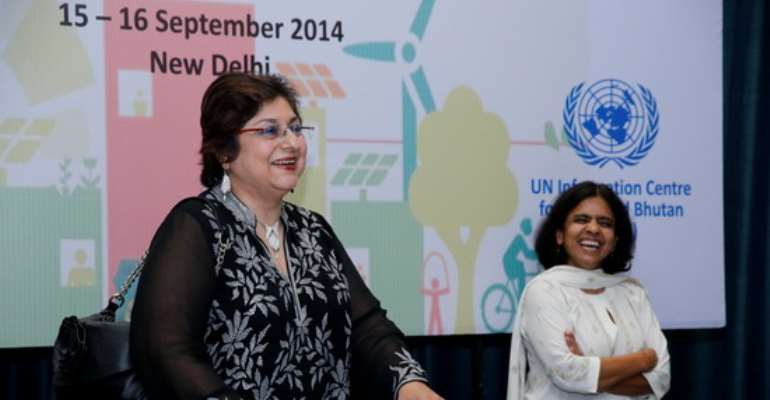
It was really a brain storming seminar for me where the issue of low-carbon development in India was discussed thoroughly with its viability and sustainability.
The two-day seminar, organized by United Nations Information Centre (UNIC) New Delhi in collaboration with
Forum of Environmental Journalists in India (FEJI), was an excellent opportunity for the participating journalists from across India to understand the issues relating to the global climate change.
As the seminar titled 'A Cleaner Green : Understanding Low Carbon Development in India' was over on 16 September 2014, I returned back to my home city Guwahati next day only to observe a massive flood in Assam and our neighboring Meghalaya days after. The incessant and heavy rainfalls in western part of Meghalaya and Assam which started in the fourth week of September aggravated the flood situation in the
Brahmaputra valley.
In fact, the people of northeast India were awaiting a pleasant autumn, the last wave of flood embraced both Meghalaya and Assam. For Arunachal Pradesh and Assam, the seasonal flood in every monsoon is a common phenomenon. But primarily a hilly State Meghalaya witnessed a massive flood out of a suspected cloud burst this year.
The series of floods in Assam, Arunachal Pradesh and Meghalaya this year snatched the lives of over 150 persons overall affecting millions of people in the region. Thousands of villages were inundated damaging vast areas of cropland and rendering many homeless to take temporary shelter in relief camps, opened by the authorities.
Assam remains the worst sufferer as the heavy rain falls in Arunachal Pradesh and Meghalaya are bound to make devastations in the flood affected State. This year while Arunachal faced a severe flood in August losing 56 people to the disaster, Meghalaya witnessed unprecedented rainfall and flood in its Garo hills during the last week of September that killed 55 people and affected thousands of villages. But floods in both the neighbouring states had huge implications on Assam.
Assam, known for its perennial flood and erosion has lost 67 persons this year due to the flood related calamities. Other statistics revealed that Assam witnessed the submergence of 4, 446 villages directly affecting 42 lakh people and the damage of 4 lakh hectare crop areas.
Around 55,000 houses were also completely damaged and over 7 lakh people were rendered homeless because of flood furies in Assam this year.
The last wave of flood in lower Assam left a trail of devastation in huge areas of the State on the southern bank of mighty river Brahmaputra. The situation became extremely grim in the districts of Guwahati (Kamrup), Kamrup rural and Goalpara districts after heavy rush of water from Garo hills in Meghalaya. My home city received continuous national and international media coverage for the misery of hundred thousands Guwahatians in the flash-flood. Various parts of the pre-historic city remained under water for many days adding the woes to the citizens.
I could remember, inaugurating the media seminar in New Delhi, Dr Rajendra K Pachauri, director-general of The Energy and Resources Institute (TERI), predicted unprecedented natural disasters in unusual places in the coming days. The Chancellor of TERI University mentioned about the Kashmir flood which devastated Srinagar valley with the apprehensions that similar calamites may happen more frequently.
“We have seen and will continue to witness an increase in extreme weather events like floods, droughts, storm surges and heat waves, a rise in sea-levels and consequent salinization of coastal fresh water resources, and drastic changes in temperature and rainfall. Heat waves like that of Moscow in 2010, which are currently 1 in 20 year events,
maybe become likely once in 2 years,” stated Dr Pachauri, a Padma Vibhushan awardee scientist of India.
On the basis of both global and regional effects, Dr Pachauri indicated that India would be vulnerable to various impacts of climate change and hence the fast-developing country must initiate a whole range of measures with encouragement to the capacity building among local institutions to cope up with the implications.
The chairman of Nobel award winning Intergovernmental Panel on Climate Change (IPCC)-which assesses the science relating to climate change-Dr Pachauri also asserted that there is a 95% certainty that most of
the warming that has taken place since the middle of the last century is the result of human actions.
The seminar highlighted various burning issues like marine pollution, salt water's intrusion to cropland, food security & public health, zero emission of green house gases, energy security with the low-Carbon strategies, early disaster warning system etc with suggestions for adoption in local stage and mitigation in global
level.
It also dealt with India's steps towards adopting renewable energy, including the vast opportunities that lie in forms like solar and wind. Various speakers emphasized that India should carve out a new path to growth that does not involve aping the carbon-heavy environment-unfriendly industrialization of the western world.
The seminar got enriched with the contributions from Dr J Srinivasan of Indian Institute of Science, Ayumi Fujino from UNIDO, Dr Arunabha Ghosh from Council on energy, environment & water, Dr Ritu Mathur from
TERI University, M Muthukrishnan from Delhi International Airport, Priti Kumar from World Bank, Prof C Manoharachary from Osmania University, Prof K Srinath Reddy from Public Health Foundation, Lise Grande, UN resident coordinator in India, Kiran Mehra-Kerpelman, UNIC director, Keya Acharya, FEJI president etc.
Sunita Narain, director-general of Centre for Science & Environment, while interacting with the journalists pointed out that though the poorest nations do not contribute to the cause of climate change, they are most vulnerable to its multilateral impacts.
She also added that India has started witnessing extreme rainfall events, more rain, less rainy days, cloud bursts, unseasonal, variable extreme rain in different States. Climate change is about sharing growth between nations and between people, where the rich must reduce so that the poor can grow, commented PadmaShri Narain, who edits environment fortnightly Down To
Earth, adding that the world is running out of space and time and it is high time to raise ambition and take actual action to reduce carbon emission.
The media seminar, where over 25 senior journalists interacted with the experts on various dimensions about low carbon developments in India, just before the United Nations Climate Summit on 23 September 2014 in New York, was really an interesting occasion to address the communication skills to deal with the issue of global warming and climate change.
The UN secretary-general Ban Ki moon, in his opening remarks in the summit, declared that the climate change has threatened hard-won peace, prosperity and opportunity for billions of people on Earth.
Today the dreams of people throughout the world hang in the balance as the climate change is defining our present.
“Our response will define our future. To ride this storm we need all hands on deck,” asserted Ban Ki moon adding that a low-carbon, climate-resilient future would be a better future that is cleaner, healthier, fairer, more stable and for everyone. So, need not to reiterate at the end of the day that its time to act by one and all, as nobody is immune to negative implications of the climate change on our Mother Earth.
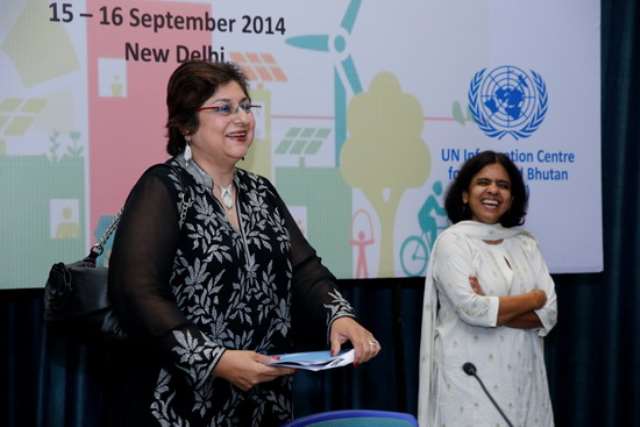
UNIC.FEJI
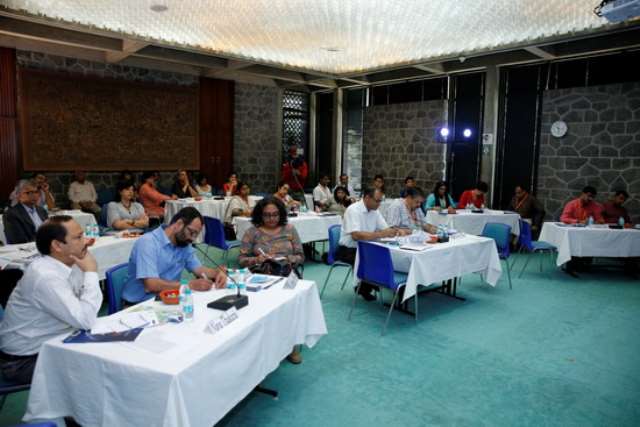
UNIC.FEJI.NAVA
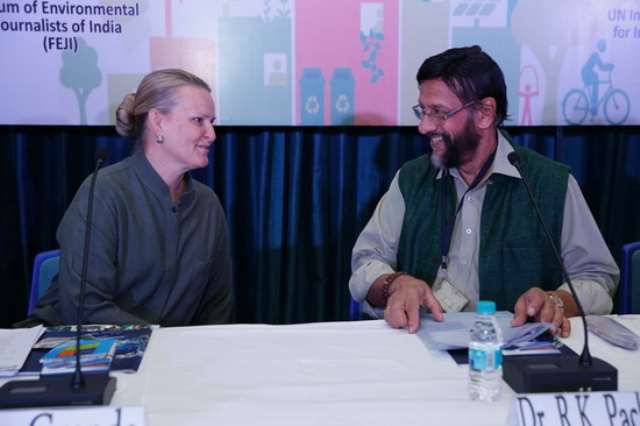
UNIC.FEJI.RK
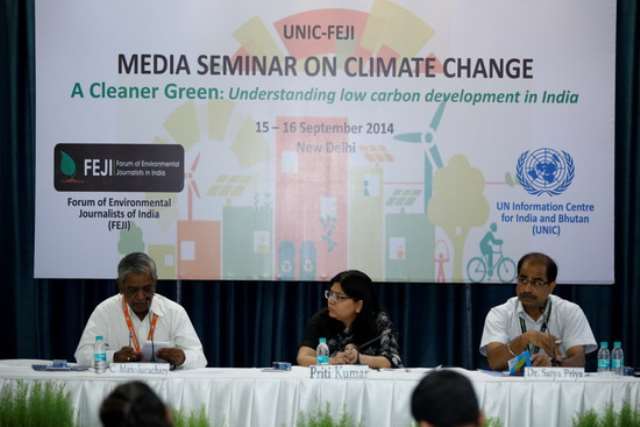
UNIC.FEJI 2

UNIC.SEMINAR.
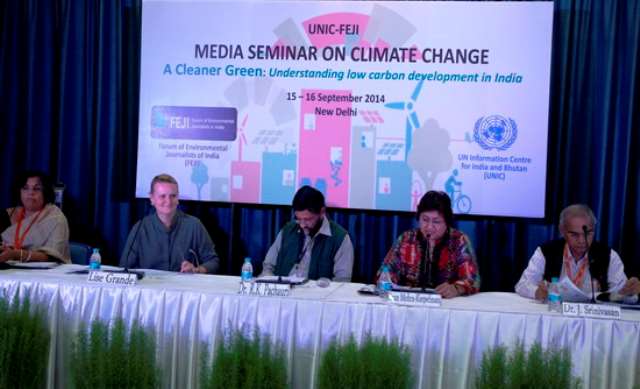
UNIC-FEJI
